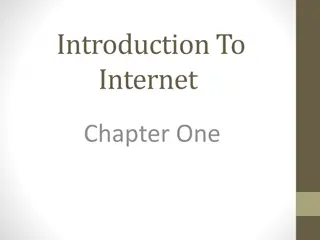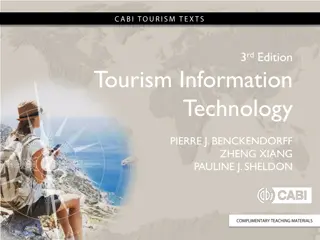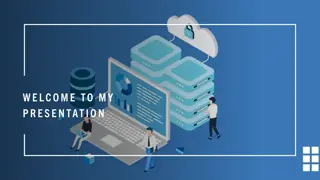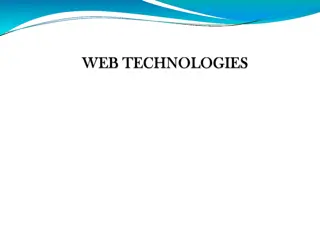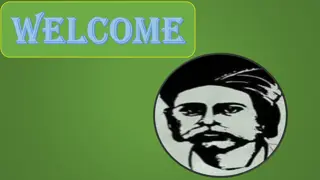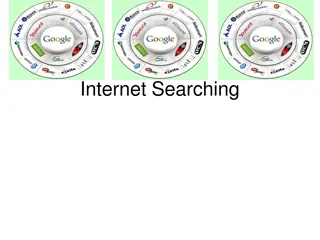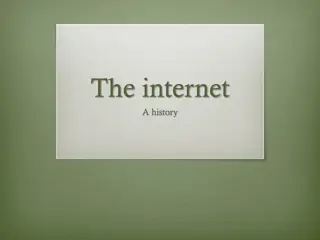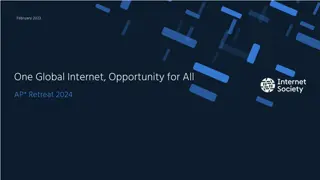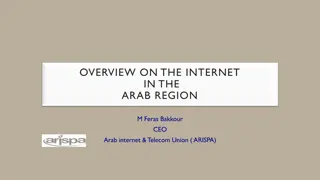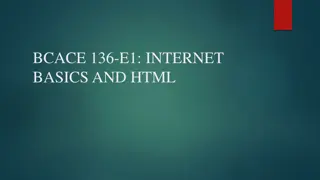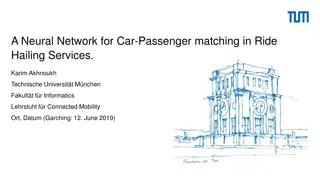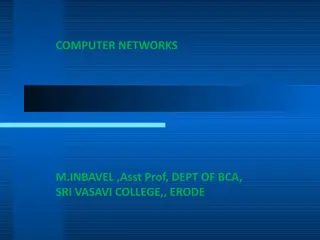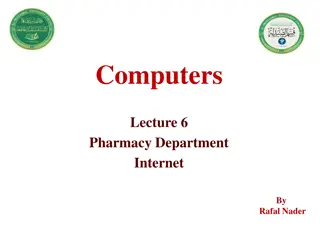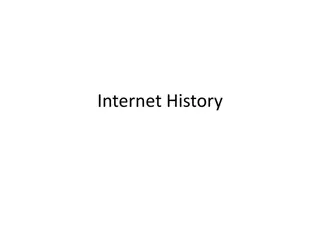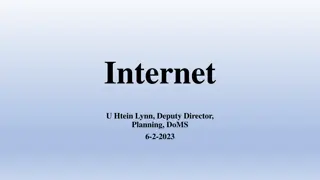Introduction to the Internet and Web by Prof. Abdul Karim
Explore the fascinating world of the Internet and Web in this insightful overview by Prof. Abdul Karim. Learn about the vast network of the Internet, its decentralized nature, uses such as email and web browsing, the concept of the World Wide Web, Internet Service Providers (ISPs), IP Addressing, and more. Delve into the essential components that shape the digital realm we interact with daily.
Download Presentation

Please find below an Image/Link to download the presentation.
The content on the website is provided AS IS for your information and personal use only. It may not be sold, licensed, or shared on other websites without obtaining consent from the author.If you encounter any issues during the download, it is possible that the publisher has removed the file from their server.
You are allowed to download the files provided on this website for personal or commercial use, subject to the condition that they are used lawfully. All files are the property of their respective owners.
The content on the website is provided AS IS for your information and personal use only. It may not be sold, licensed, or shared on other websites without obtaining consent from the author.
E N D
Presentation Transcript
INTRODUCTION TO THE INTERNET AND WEB Prof. Abdul Karim Assistant professor Deptt. Of Computer Sciences
INTERNET It is the largest network in the world that connects hundreds of thousands of individual networks all over the world. The popular term for the Internet is the information highway . Rather than moving through geographical space, it moves your ideas and information through cyberspace the space of electronic movement of ideas and information.
INTERNET No one owns it It has no formal management organization. As it was originally developed by the Department of defense, this lack of centralization made it less vulnerable to wartime or terrorist attacks. To access the Internet, an existing network need to pay a small registration fee and agree to certain standards based on the TCP/IP (Transmission Control Protocol/Internet Protocol) .
THE USES OF THE INTERNET Send e-mail messages. Send (upload) or receive (down load) files between computers. Participate in discussion groups, such as mailing lists and newsgroups. Surfing the web.
WHAT IS WEB? The Web (World Wide Web) consists of information organized into Web pages containing text and graphic images. It contains hypertext links, or highlighted keywords and images that lead to related information. A collection of linked Web pages that has a common theme or focus is called a Web site. The main page that all of the pages on a particular Web site are organized around and link back to is called the site s home page.
INTERNET SERVICE PROVIDER (ISP) A commercial organization with permanent connection to the Internet that sells temporary connections to subscribers. Examples: Prodigy, America Online, Microsoft network, AT&T Networks.
ADDRESSES ON THE WEB:IP ADDRESSING Each computer on the internet does have a unique identification number, called an IP (Internet Protocol) address. The IP addressing system currently in use on the Internet uses a four-part number. Each part of the address is a number ranging from 0 to 255, and each part is separated from the previous part by period, For example, 106.29.242.17
IP ADDRESSING The combination of the four IP address parts provides 4.2 billion possible addresses (256 x 256 x 256 x 256). This number seemed adequate until 1998. Members of various Internet task forces are working to develop an alternate addressing system that will accommodate the projected growth. However, all of their working solutions require extensive hardware and software changes throughout the Internet.
DOMAIN NAME ADDRESSING Most web browsers do not use the IP address t locate Web sites and individual pages. They use domain name addressing. A domain name is a unique name associated with a specific IP address by a program that runs on an Internet host computer. This program, which coordinates the IP addresses and domain names for all computers attached to it, is called DNS (Domain Name System ) software. The host computer that runs this software is called a domain name server.
DOMAIN NAME ADDRESSING Domain names can include any number of parts separated by periods, however most domain names currently in use have only three or four parts. Domain names follow hierarchical model that you can follow from top to bottom if you read the name from the right to the left. For example, the domain name gsb.uchicago.edu is the computer connected to the Internet at the Graduate School of Business (gsb), which is an academic unit of the University of Chicago (uchicago), which is an educational institution (edu). No other computer on the Internet has the same domain name.
UNIFORM RESOURCE LOCATORS The IP address and the domain name each identify a particular computer on the Internet. However, they do not indicate where a Web page s HTML document resides on that computer. To identify a Web pages exact location, Web browsers rely on Uniform Resource Locator (URL). URL is a four-part addressing scheme that tells the Web browser: What transfer protocol to use for transporting the file The domain name of the computer on which the file resides The pathname of the folder or directory on the computer on which the file resides The name of the file
Structure of a Uniform Resource Locators pathname protocol http://www.chicagosymphony.org/civicconcerts/index.htm filename Domain name http => Hypertext Transfer Protocol
HTTP The transfer protocol is the set of rules that the computers use to move files from one computer to another on the Internet. The most common transfer protocol used on the Internet is the Hypertext Transfer Protocol (HTTP). Two other protocols that you can use on the Internet are the File Transfer Protocol (FTP) and the Telnet Protocol



